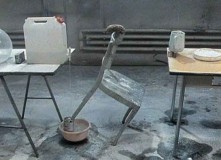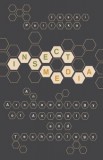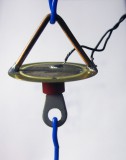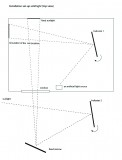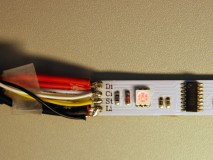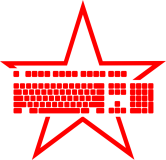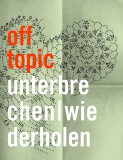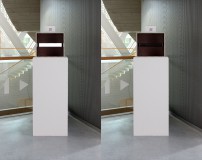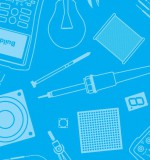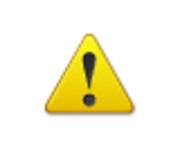A seminar on code and material with a focus on the notion of information: Within the course, students develop material artefacts that transmit information. These artefacts are coupled into a chain (or channel), transmitting a given input via multiple stations and possibly yielding a Chinese whispers apparatus.
The talk addresses the intertwining of a certain discourse of technology with animals, and frames it as an intertwining of aesthetics and the ecocrisis. It addresses current ecological debates as a matter of aesthetics in the very fundamental sense of perception and epistemology, and links it with mediatic contexts.
This simple high impedance amplifier is suited to boost to output signal of a piezo-disk making it to a microphone, geophone, hydrophone or use it as accelerometer sensor. Mounting the piezo with double-faced adhesive tape to a wall, structure-borne sound can be captured. Further experimenting with other objects will reveal lots of surprising sounds.
In a room facing south sunlight enters through the windows, drawing rectangular shapes on the wall. During the day, these travel along the wall in the opposite direction of the sun’s movement. A heliostat, a mirror construction, which follows the movement of the sun, is located outside the room and reflects part of the light back into the room, thus yielding a rectangle of sunlight at a fixed position on the wall.
This stripe is 5m long with 150 RGB Leds which are organized in groups of 3 Leds. Each group is addressable individually, so always three leds in a group are showing the same color.
Sam accompanies the hacker scene with a look onto politics and because of that he has been involved with the CCC since the days of acoustic couplers. In his talk it becomes apparent how technology fosters creativity. And it is shown that hacking always has a social component and influences policy in Germany and world wide, as well as movements such as Anonymous or Occupy.
The fourth issue (numbered 3) of off topic, magazine for media art is released on Friday, December 9th at the KHM library. The issue is devoted to the topic interruption/repetition (unterbrechen/wiederholen) and among many contributions features the project › rare earth by Lucas Buschfeld and an article on Feedback Machines by › Lasse Scherffig.
Based on the installation › aloop, Aloop Net Tokyo Berlin detects radioactive decay in the Museum of Contemporary Art Tokyo and the Institut für Raumexperimente Berlin. Connected via the internet, each respective decay triggers a visual event in the other city: a fading from white to black.
The installation › Jellyfish by Keiko Takahashi will be shown at Make: Tokyo Meeting 07 at the Tokyo Institute of Technology.
In two lectures HTML, CSS and the Content Management System Indexhibit are introduced. The lectures are given by Andreas Muxel who on November 16th is accompanied by Steffen Görg (Indexhibit development team).


